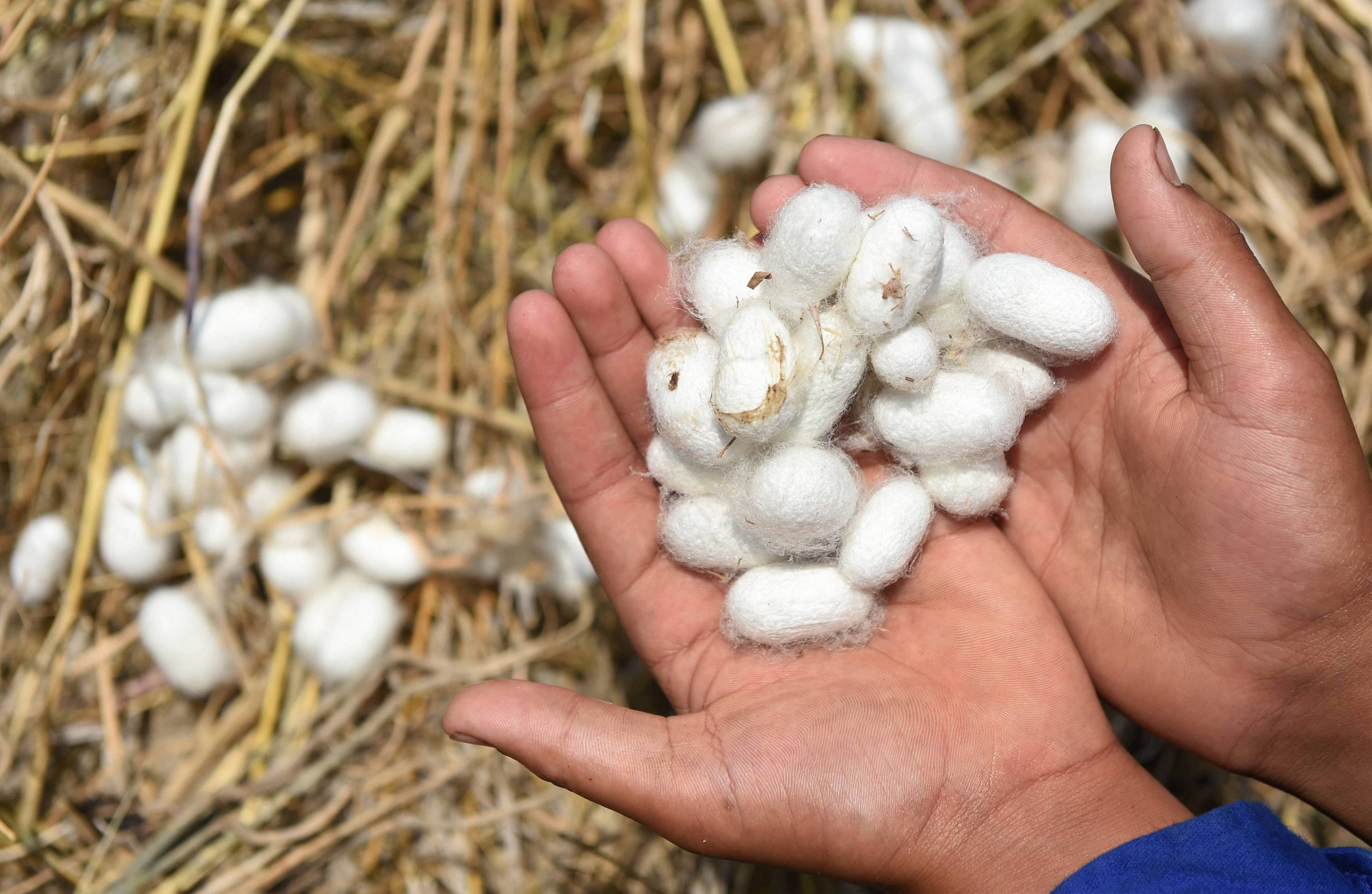A World Bank-funded project is helping revive Kashmir’s silk industry. Despite a rich tradition of producing high end varieties of silk and exports to countries such as the UK, the industry suffered gradual decline due to several factors including eruption of militancy in the 1990s. During the Second World War, silk fabric for parachutes of allied forces was exported from Kashmir, but several reeling and weaving factories became defunct over time. The industry took a further hit due to the devastating 2014 floods that engulfed vast portions of the valley until the World Bank stepped in to provide funds for new machines, equipment, and renovation of buildings.
“We have also bought more non-local workers to speed up the flow of the work,” Indiatimes.com quoted Ghulam Mohammad Bhat, manager of Solina Silk Factory, as saying. “We are hoping for the best silk production now onwards,” Mohammad added.
The Solina factory is Kashmir’s first silk reeling factory established during the Dogra regime in capital city Srinagar in 1897 under the patronage of British sericulturist C W Walton.
A silk-weaving factory established in Rajbagh area in 1937 by Maharaja Hari Singh has procured equipment, machinery and built infrastructure with the help of the Rs 22.5 crore fund it received from the World Bank.
Its manager, Zameer Syed Allaie, said the factory, which was damaged in the 2014 floods, has increased annual production to 2.5 lakh meters from the earlier 1.5 lakh meters.
There has also been a boost in production of different varieties of silk from eight to 13.
Recounting the industry’s past glory, Allaie said the 114 looms during the Maharaja’s regime used to produce 20,000 meters per month besides 38 varieties of silk.
Currently, the approximate annual production of cocoons in J&K is pegged at 900 metric tons.
The valley’s association with silk and sericulture dates back to centuries with mentions in Rajtarangini, the oldest written chronicle from the region, and a 7th century AD travelogue of Chinese scholar Xuang Zang.



